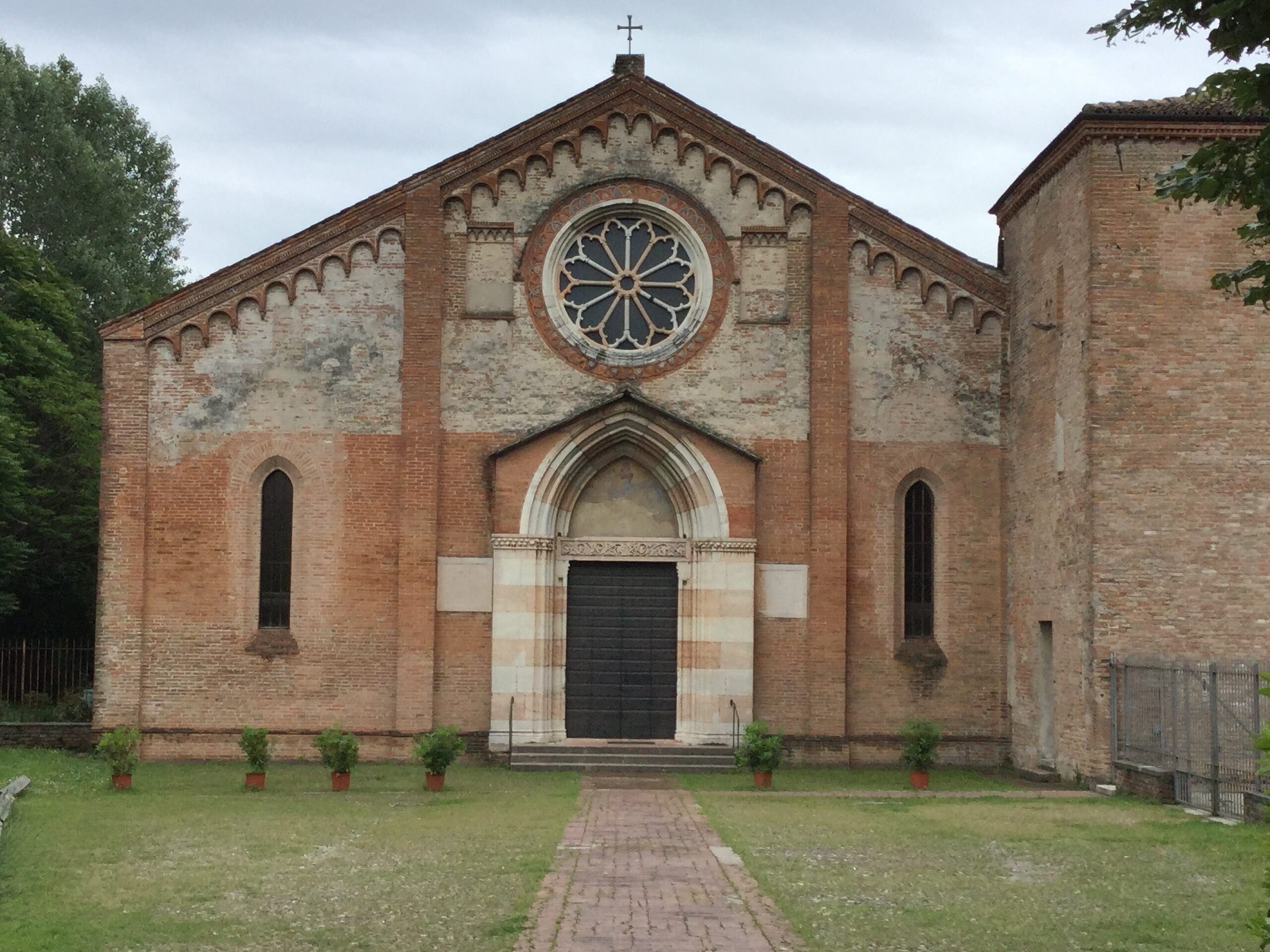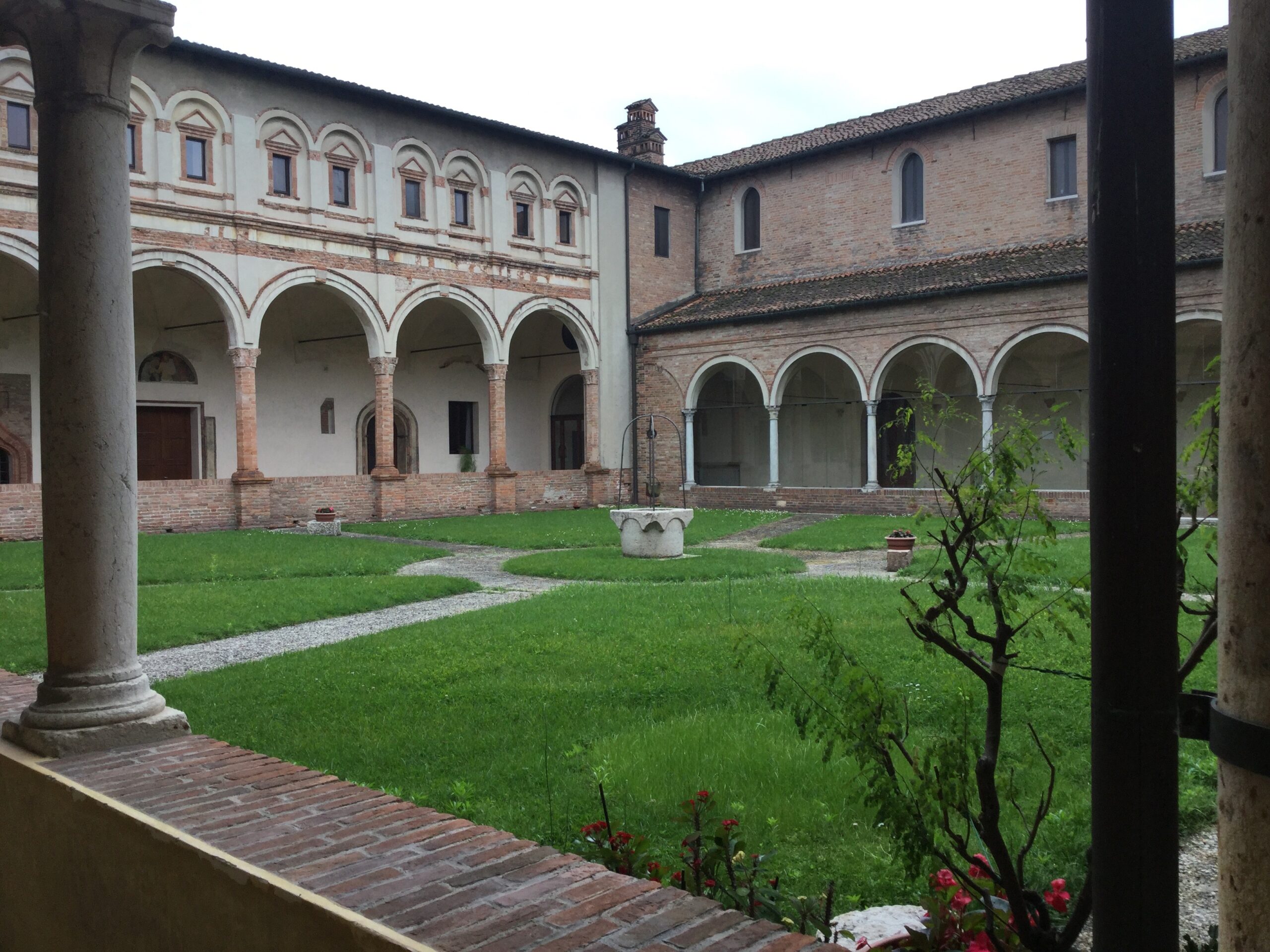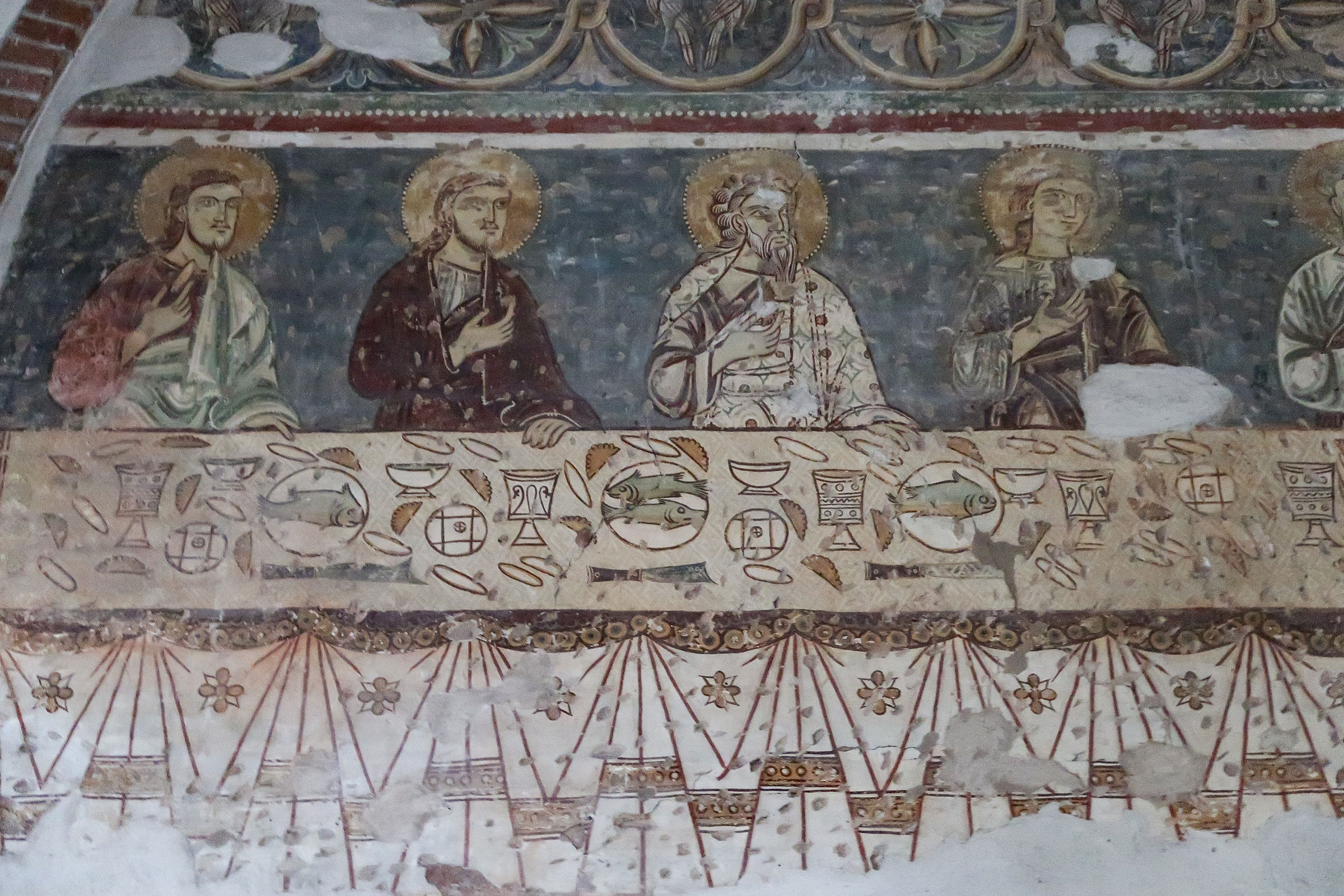The city of Mantua is best known for the churches designed by Leon Battista Alberti but explorations beyond the center of town lead to the Valletta Valeschi neighborhood where Santa Maria del Gradaro is located.
The church, built in the mid-to-late thirteenth century, was re-incorporated into the neighboring convent after a long restoration period which concluded in 1966.
The medieval interior with the vaulted side aisles and timber roof creates a sophisticated acoustical setting well-suited to listening to either a spoken sermon or to Gregorian chant.
Preserved in the apse are frescoes that likely date to the fifteenth-century and which show a fragment of a Last Supper scene. Four apostles, in richly ornamented robes, sit on the far side of the table; each turns to face the central figure of Christ. Their right-hands are raised and the fingers of their other hands rest on the table laden with fish, bread, and wine goblets. Their feet are masked by a white, decorated cloth that is carefully draped before the group and which distances the religious figures from the worshiper below. The motif of the folded and draped cloth also appears on the furnishings within the church.
Also included in the decoration of the interior is a series of frescoes from the nineteenth century depicting scenes from the Life of Christ.
In telling the history of the site, one must call attention to the existence of a Fascist concentration camp.
The convent was suppressed by Napoleon and was, effectively, under military control starting in 1775. During the Second World War the convent housed concentration and refugee camps. In an article written for the Centro Primo Levi in November of 2015, Carlo Spartaco Capogreco explores the history of internment and deportation. He notes that, in 1938, around 51,000 Jews were living in Italy. During the Second World War, 48 concentration camps were built in Italy often in uninhabited or underutilized structures. Of the more than 6000 people interned, more than 44% of them were in camps in the north of Italy. The camp on the site with Santa Maria del Gradaro likely served as one of the provincial camps established in response to an ordinance from November 30, 1943 that set the deportation of the Jewish population in motion. These provincial camps were closed in the summer of 1944.
At the conclusion of his article, Capogreco notes, “The history of the concentration camps employed by Fascism between 1940 and 1945 (first under the Kingdom of Italy, then under the Social Republic of Salò) was therefore rapidly erased from national memory.” The best known of the camps in Italy, Fossoli, outside Modena, is now a historical site which seeks to draw attention to these erased histories. On February 22, 1943 Primo Levi, along with 600 deportees, was transported from Fossoli to Auschwitz.
References: Parrocchia di Gradaro; FAI; Chiesa di S. Maria del Gradaro; Fossoli: Foundazione Ex-Campo; Carlo Spartaco Capogreco, “The Fascist Concentration Camps,” Centro Primo Levi Monthly (November 7, 2015).
Images:
Facade, cloister, nave; Santa Maria del Gradaro, Mantua (Jennifer D. Webb)
Interior details (The Last Supper & Scenes from the Life of Christ) (Permission to use granted to Jennifer D. Webb)
Further reading: Capogreco, Carlo Spartaco. Mussolini’s Camps: Civilian Internment in Fascist Italy. Milton Park: Routledge, 2019 (forthcoming); Levi, Primo. Survival in Auschwitz. New York: Simon and Schuster, 1996.
Posted by Jennifer D. Webb








